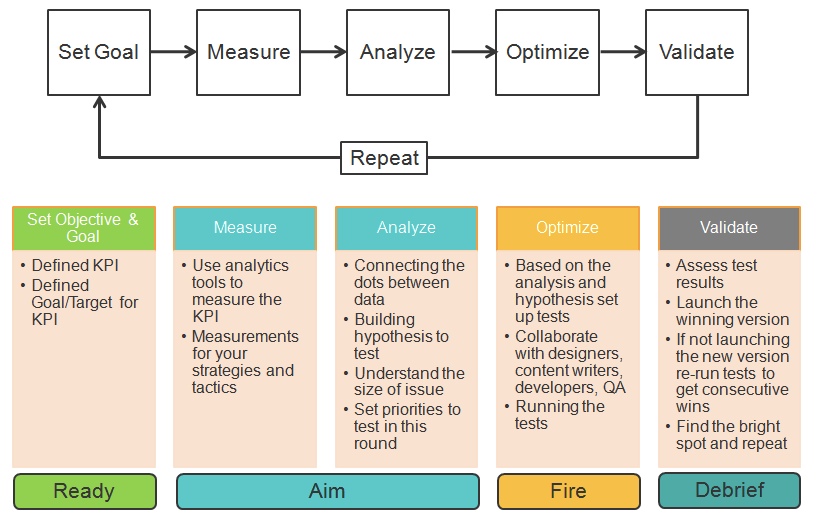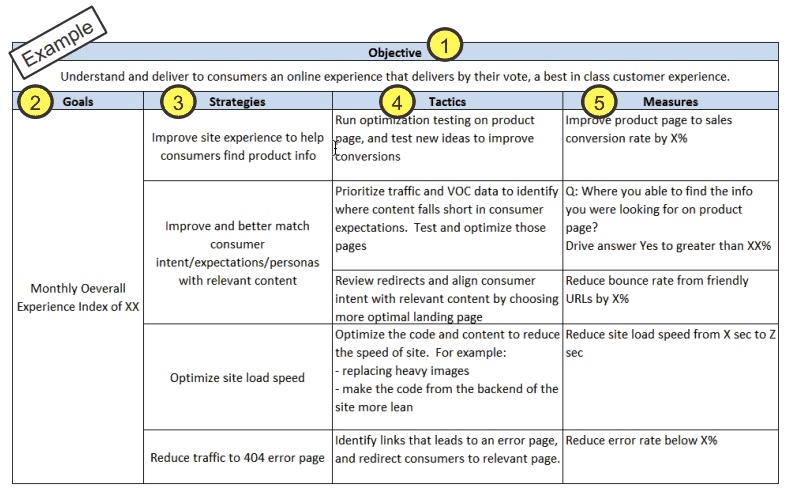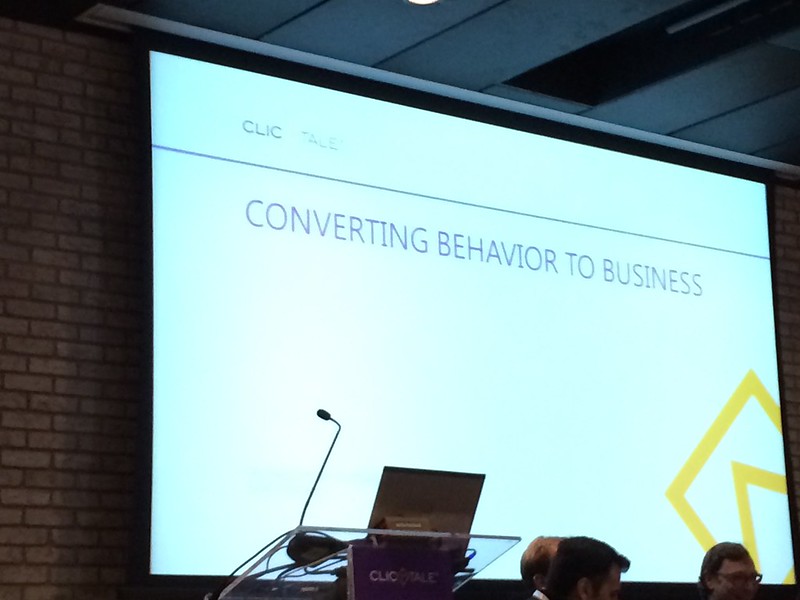
Converting customer behavior to business in marketing
In late October, I flew to New York to speak for Clicktale’s first conference on ‘Converting Customer Behavior to Business’. I have to say, it was awesome to be there to be part of the speaker along with Bryan Eisenberg and Seth Godin.
I’d like to share with my blog reader on the high-level stuff that I covered.
1) Idea of “Set Ready, Aim, Fire, and Debrief”
Many marketers get this part wrong. It is very common to hear from analysts who are struggling to get out of being a reporting analyst that marketers who he/she supports always involve the analytics after they’ve planned or executed the campaign.
In other words, what they are doing is Set Ready -> Fire -> Aim, that is why the analytics person gets involved after the marketers fired off their marketing efforts.
Now, here are what goes into the each point, but it is important that the entire marketing team and analytics are following a discipline of Set Ready -> Aim -> Fire -> Debrief. Note: notice the difference on the order of Aim and Fire.
Set Ready
- Define your objectives and goals
- Know what success looks like
Aim
- Measure
- Listen to customers
- Plan your strategy
- Build hypothesis with good test plan
Fire
- Execute
- Run tests
- Work towards approximated goal
- Make changes based on the outcome
Debrief
- Review the completed test results
- Validate results post production changes
- Then repeat…
2) Process
- Respect the process
- Build optimization rhythm thru process
- Find the bright spot and repeat
The process is very important for anything in digital marketing, analytics, and optimization. What’s awesome about digital marketing that makes it very different from traditional media is, you can fail and raise back up fast, and optimize your efforts anytime.
Now, here is a process I use for optimization and I’m sure everyone got something similar which comes in various flavors. When you put this process with the earlier Set Ready, Aim, Fire, and Debrief, this is what it’ll look like.

3) OGSTM Framework

Don’t forget this. KPI is key performance indicator and you want to track that critical few. The GOAL right. All measurements for the strategies and tactics are metrics to help you achieve and optimize towards the goal.
4) Customer objective != Business Objective
- In many cases, Business objectives are not necessarily aligned with Customer’s objectives. Check out the example from the table below.
- Your website experience issues could come from not meeting customer objective and goals since it is easy to get focused and locked on the business objectives.

5) Test Test Test
Now you know your process, and you know what problems to solve to hit your target. For every pain points or hypothesis, you have to improve your web site’s experience you’ll need to go test it.
A/B testing tools are affordable now, and there is no reason not to test. The more you wait and not test, you’re just leaving money on the table. Or your competitors are just going to get better than you.
Testing is the most important thing you can do to learn and optimize to convert customers for your business.
6) Focus on the KPI and keep on executing your strategies and tactics
It is very important to respect the process and keep on going through it many times and got to do it fast. It is like you having to train your muscles to work for you in a certain way.
This point is like highlighting the importance to train yourself to build that cadence for optimization.
7) Don’t forget to focus on the Bright Spot
- Avoid getting caught on the bad numbers. For example, when you look at bounce rates for areas to optimize, it is easy to get caught up on those numbers (high bounced pages) and lose the bigger picture. That’s why you have to keep on analyzing and dig deeper beyond bounce rates.
- Focusing on the positive outcomes and finding the ‘Bright Spot’ may give you more ideas and angles to approach problem-solving. If your test works and you see great results, then celebrate and try to see if you can repeat that on another part of the website.
8) Don’t underestimate teamwork and collaboration
It is pretty common to hear people ask how big is the analytics team and all.
Obviously, depending on the size of the company and where they’re prioritizing resources will vary, but if some assumptions are put in place that we don’t have a good amount of budget, resources, or tools.
In that case, you don’t or won’t have a big analytics team, what would we analytics person do or can do with such limitations.
If you look up for growth hacker (who uses data to help make a startup grow) and see what they’re doing in start-ups, it’ll be evident that they’re getting stuff done with very limited resources and budget.
They’re able to get stuff done because they work with their team, get engineers involved, they have to work across different groups.
A common thing that big enterprise analytics people should be thinking is that how do you work across departments and make sure you get your stuff done, but scale so that you’re influencing beyond your area and changing how departments talk to each other.
What I mean is, if there is anything you need to do like getting a database set up or getting some creatives for A/B testing, don’t be afraid to get them to work together.
Share the results that you see on your measurement and optimization projects. Get them excited so that they want to work with you. This is a pretty good recipe to make your optimization process run faster.
Hope you were able to enjoy the high-level stuff that I shared at the Clicktale conference, and hope that gave you some spark for an idea or something to take back to your work. All the process and effort you put in will definitely help you convert customers for your business.

Thank you so much for taking the time to read my content. If you've liked what I've had to say please subscribe!

ZoomMetrix Newsletter
Join the newsletter to receive the latest updates in your inbox.